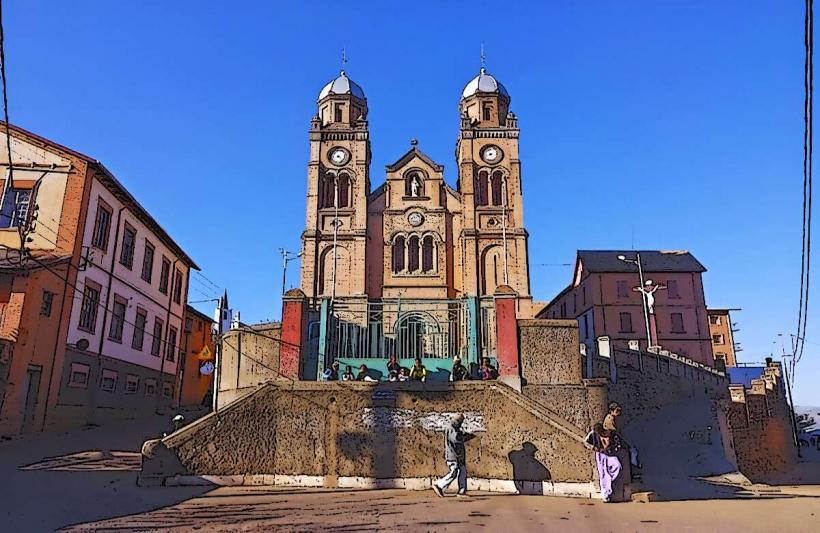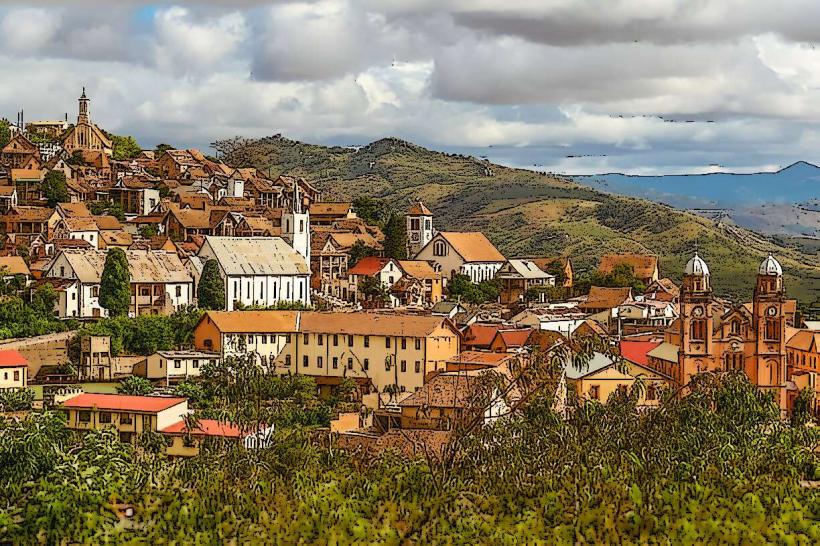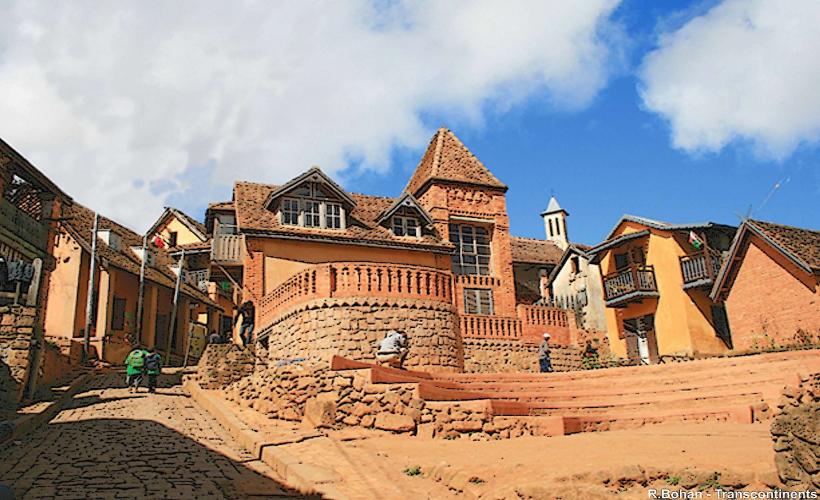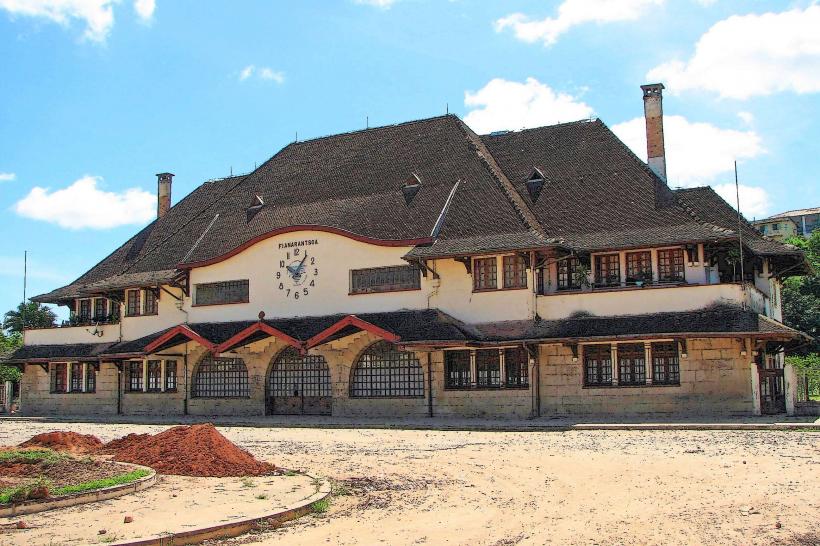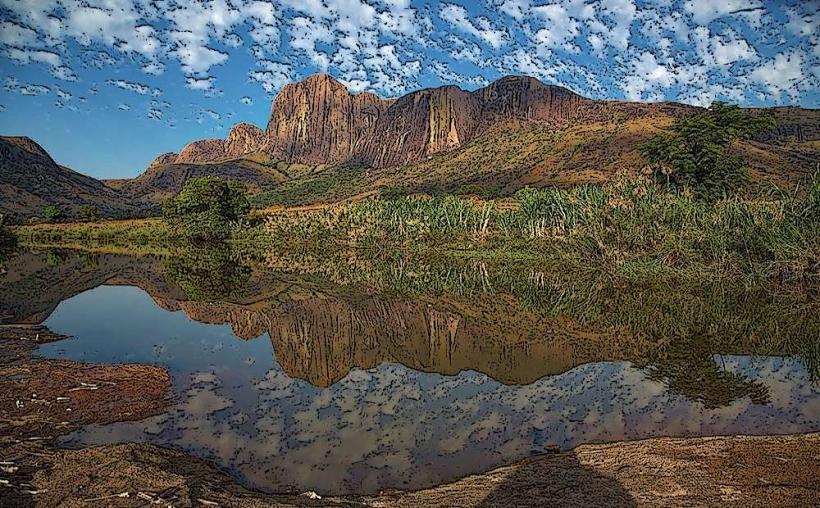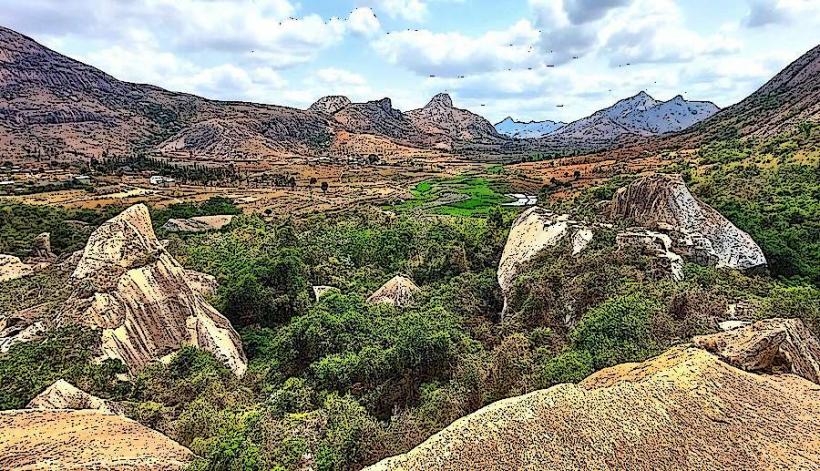Information
Landmark: Lalasoa ValleyCity: Fianarantsoa
Country: Madagascar
Continent: Africa
The Lalasoa Valley is a scenic and historically significant region located in the central highlands of Madagascar, near the city of Fianarantsoa. The valley is known for its natural beauty, agricultural importance, and its role in the history of the region.
Geographic and Natural Features:
- Location: The Lalasoa Valley is situated to the south of the city of Fianarantsoa. It lies within the central highland plateau of Madagascar, which is known for its rolling hills, fertile land, and cool climate.
- Topography: The valley is surrounded by hills and mountains, providing a dramatic backdrop. The terrain is mainly characterized by rolling hills, gorges, and fertile land that is well-suited for agriculture. The valley has a temperate climate, which has contributed to its agricultural productivity.
- Flora and Fauna: The valley is home to a rich variety of flora and fauna. The area’s vegetation includes tropical plants and forests, while the wildlife consists of various species native to Madagascar, such as lemurs, chameleons, and numerous bird species.
Agricultural Importance:
- Crops: The Lalasoa Valley is known for its fertile soils, which support the cultivation of a variety of crops. Farmers in the area grow crops such as rice, corn, vegetables, and fruits, benefiting from the valley's favorable climate and rich soil.
- Rice Farming: Rice is one of the main crops cultivated in the valley, as it is a staple food in Madagascar. The region's irrigation systems allow for the cultivation of rice, especially in the terraced fields that line the valley’s slopes.
- Agricultural Livelihoods: Many families in the Lalasoa Valley rely on agriculture for their livelihood. The valley has long been a center for rural agricultural activity, with small-scale farming being the predominant occupation.
Historical and Cultural Significance:
- Merina Kingdom: The Lalasoa Valley played an important role in the history of the Merina Kingdom, the dominant political entity in central Madagascar before the French colonial period. It was an area of strategic importance, where the fertile land supported the agricultural needs of the kingdom.
- Cultural Heritage: The valley is culturally significant to the Merina people, who have historically inhabited the central highlands of Madagascar. The region’s history is intertwined with that of the kingdom and the broader Malagasy cultural landscape.
- Traditional Architecture: The valley is home to traditional Malagasy homes, typically zebu horn constructions, made from local materials such as wood, thatch, and stone. These homes reflect the unique architectural style of the highland regions.
Role in Malagasy History:
- The Lalasoa Valley, like much of the central highlands, was an important center of activity during the time of the Merina monarchs, who sought to consolidate their power in the region. The area’s fertile land was essential for providing food to the growing population of Fianarantsoa and other cities in the highlands.
- The valley was also a site for agricultural experiments and advancements, particularly during the rule of King Radama I and his successors in the 19th century.
Ecotourism and Sustainability:
- Ecotourism: Due to its natural beauty and historical significance, the Lalasoa Valley has potential for ecotourism. The scenic landscape, combined with its proximity to Fianarantsoa, could attract visitors interested in hiking, exploring traditional farming practices, and learning about the history of the region.
- Conservation Challenges: Like many parts of Madagascar, the valley faces challenges related to deforestation, soil erosion, and the impacts of climate change. Efforts to promote sustainable farming practices and conservation of the valley's natural resources are ongoing.
Modern-Day Importance:
- The Lalasoa Valley continues to be a vital part of the local economy, as it remains a significant agricultural hub. However, like many rural areas in Madagascar, the region also faces challenges related to infrastructure, education, and access to modern healthcare.
Overall, the Lalasoa Valley represents a blend of natural beauty, historical importance, and agricultural productivity, making it an integral part of both the local and national identity of Madagascar.

